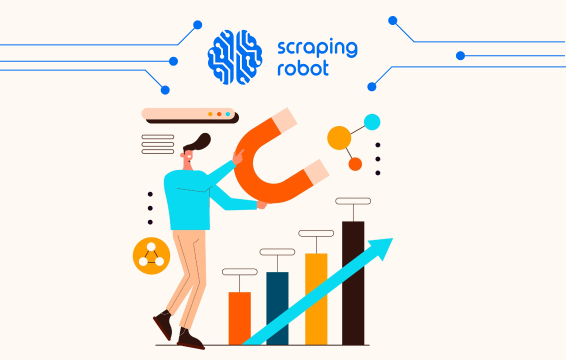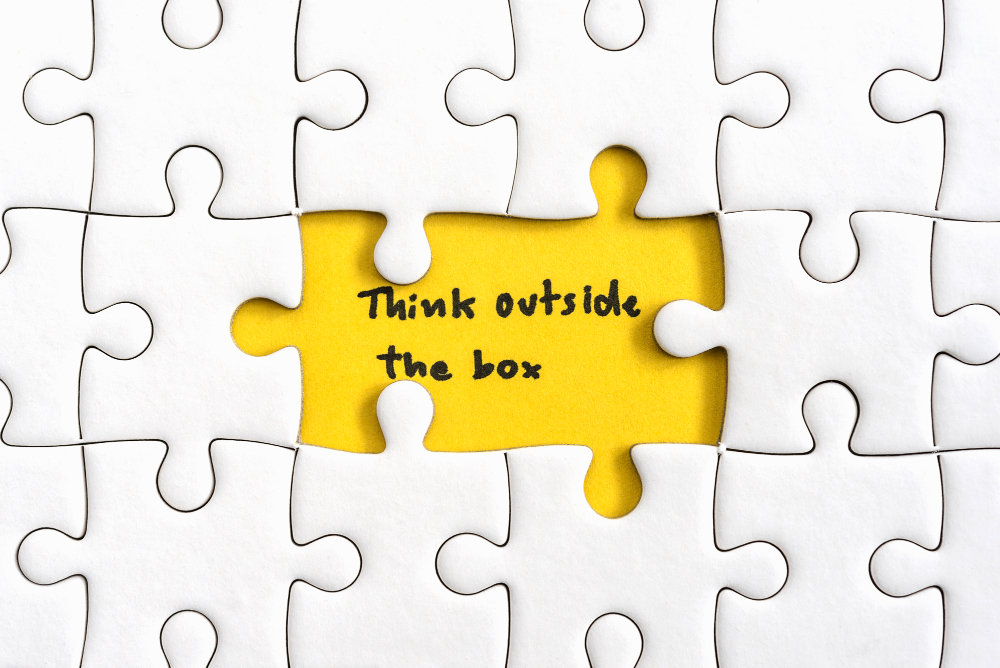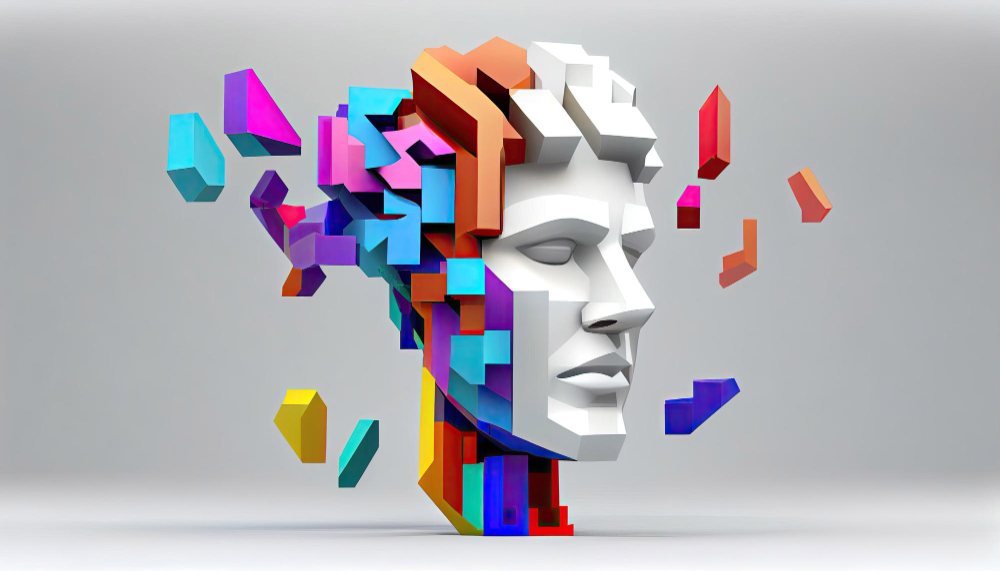Using Creative Data To Achieve The Best Of Both Worlds

All throughout school, I identified as one of the art oriented kids and felt separated from students who were good at science and math. Unfortunately, schools still think of the arts and the sciences as different worlds. Because of this, I always focused on art and assumed I was bad at math or that it could never help my creative endeavors. Thankfully, the world is becoming more open to the idea of combining seemingly separate worlds. Companies are starting to understand that data is only as useful as you make it. By hiring creative thinkers, companies are able to see data differently or use it in more creative ways. Creative data is the future. Without understanding what inspires and attracts people, how can you grab their attention? Similarly, artists are also learning how to use data to gain inspiration and create data-based art. By using data and creativity to reinforce one another, we can finally surpass our limitations by combining these distinct worlds.
If you already understand the basics of creative data, use the table of contents below to discover how to incorporate it into your next business endeavor or creative project.
Table of Contents
What Is Creative Data?

While there is much focus on how to collect number and word driven data (sales numbers and reviews), there is less focus on how to harness data from creative content like images. When we look at photos or ad content, we tend to see the entire piece together instead of the separate data points embedded in imagery. Creative data is information within creative content that is then identified on its own as features/data points. For example, a makeup ad is composed of many pieces (e.g. photo of model, photo of product, tagline, color, effects) that when singled out help advertisers understand what about specific content works. When analyzing creative data, one may start to notice what colors, taglines, or models get the most positive response from consumers.
How Can I Use Creative Data In Business?

While you learn in school how to use data from sales and other concrete transactions, creative data is just as important. By learning how to use creative data in your business, you will have greater success in attracting customers by creating inspired ad campaigns, creating unique consumer experiences, and understanding the desires of each customer.
Create inspired marketing campaigns
As mentioned above, advertisements are most powerful when they tap into visual elements that persuade consumers to buy makeup, food, clothes, etc. However, storytelling is a key component in creating ads that emotionally impact people. In college, my friend and I would always cry at this Samsung commercial where an ostrich learns to fly using a virtual reality headset while “Rocketman” by Elton John plays in the background. The end of the ad says, “We make what can’t be made so you do what can’t be done.” While the premise may seem ridiculous, it creatively uses story, music, and shock to make me and my friend cry. The ad plays with the storyline of learning something new that may remind us of learning to ride a bike until we could take the training wheels off and ride around town ourselves. The advertisers might have conducted research related to the emotions behind famous songs like “Rocketman.” By replacing the human role in the story with an ostrich, the ad gives us a bit of humor while also having the ostrich defy physical limitations to give the viewer a sense of magic. All these creative choices can be derived from data and used to build an exciting story that engages the viewer.
Personalized experiences for consumers
Outside of traditional advertising, data for creatives can be used to make personalized experiences for customers that make them more likely to suggest a service to friends or create loyalty. One of the best examples of this is the Spotify wrapped playlists. At the end of each year, Spotify uses a listener’s data to create a custom video and playlist to represent their year. For example, my Spotify wrapped this year included Phoebe Bridgers and Dua Lipa. After getting my results, I went on social media to share them and see what my friends top artists were for 2020. In addition to creating a fun experience that can be shared on social media and amongst peers, Spotify also creates an incentive for customers to join as premium members which gives them more data each year than non-premium members. Read this story of Spotify design intern Jewel Ham who came up with the wrapped visual presentation without receiving proper credit. While Ham didn’t come up with the wrapped concept herself, she created the social media-friendly format that debuted in 2020, a powerful example of how to present data in creative and consumer friendly ways.
Expand audience
As companies use creative data to make better advertisements and come up with new experiences, creative uses for data can also include expanding the reach of one product to more target groups. Netflix is a great example of using data to creatively reach a wider audience. For example, the Netflix algorithm will identify users as types based on interest (romance, action, comedy, etc). Once it understands what kind of user you are, the thumbnail images for films and TV shows will be different based on that type. For example, you and your friend will have different cover art for the same exact film based on your interests and the data Netflix gathered on what you watch. If you are into romance, Netflix will use an image of a kiss or embrace in a film to get your attention. A friend that favors action will see the same film come up but with a poster depicting an action scene in the film. By using creative data, Netflix creates custom visuals for each film which widens their audience by making a single film appear enticing to fans of different genres. Companies can mimic this tactic by creating different ad content for each target demographic or simply highlighting qualities of a product that appeal to different customer bases.
Creative Data Uses For Artists

Data may seem reserved for the business world, but this can’t be further from the truth. For artists, data can help inspire new ideas or even help give form to abstract pieces. Below are some ideas for how to incorporate data into your artistic endeavors.
Use data to identify issues central to art
While I’ve focused a lot on how to be more creative with data in the business world, artists are increasingly using data for inspiration and creation. If your artistic medium (painting, ceramics, etc) does not use computer technology, you may be confused how to use data to your advantage. As a writer, I know how it feels to be stuck and lacking inspiration. Sometimes all you need is a spark of an idea or a realization to get you started. Scraping search results gives you an idea of what kinds of topics and questions people are seeking answers to. With this information, you can pick topics and stories that are relevant to what readers want. Additionally, scraping search results for keywords like “ceramics,” can show you what kind of ceramics are the most popular right now leading you to more sales of your final pieces. This way, your art is dealing with prescient issues and popular aesthetics inspired by data while accessing emotions and perspective that data lacks.
Make experimental art
As a little girl, I always remember thinking that pie charts and graphs always looked like art to me. Some artists today agree and draw inspiration directly from the physical image or shape that a given data set creates. Using creative data visualization, artist Nathalie Miebach creates physical structures based on weather patterns and storm data. Miebach even took it a step further and created musical scores directly from weather data to be played by string quartets. During my senior year at NYU, I worked in the school library. For part of the year, there was an installation that used visitor data from the library turnstiles to create a custom piece that played each day at sunset. Even as days begin to feel indistinguishable, having a different song at the end of each day helped remind me of the variations present in life. What these projects prove more than anything is the way data is changing artists’ limits and ways of creating.
Graphic art made from data sets
While graphic art might not hang on the walls of galleries and museums, it is still work that requires inspiration and execution. Even as creative artists use data to inspire pieces, graphic artists have the difficult job of presenting data in engaging and comprehensive ways. If you ever ask yourself how to be creative in data science, data journalist David McCandless has the answer. A master of infographics, McCandless founded Information Is Beautiful to help teach others about the visual and intellectual power of data sets. By creating infographics that are at once artistic and also present important facts to the public, McCandles represents the perfect mix of these two worlds. On our blog, you can find more information on data-driven journalism.
Using Web Scraping to Find Creative Data Resources

Web scraping is the automatic process of extracting and condensing data into a downloadable spreadsheet. This work can be done manually, but it would require tons of time and energy. By using a scraping tool like Scraping Robot, you can easily collect data that can unleash your creativity whether you are in business or the art. Below are some ways to use scraping next time you encounter data for creatives.
Custom scraping solutions
Scraping Robot’s modules are useful yet limited. For businesses that rely on collecting tons of data on a consistent basis, a custom scraping solution is more suited to your needs. You and the Scraping Robot team will develop a solution that fits your unique data needs as well as enable you to scrape in mass quantities for a lower per scrape price. With custom solutions, you won’t have to worry about following confusing scraping laws or hiring developers because Scraping Robot manages those problems for you. For artists looking to incorporate data into their work, you might find yourself needed more unique or complex data sets than a module allows. Modules can help you with initial insights, but custom scraping solutions are built to find the data you are looking for, no matter how random or specific. If a custom scraping solution sounds like the right choice for you, contact us to get started.
Social media
Data for creativity often requires human insight. If you are looking for data relating to opinions or customer tastes/interests, then social media is your treasure chest. Scraping social media sites helps you gauge customer reactions to previous ad campaigns, which can help you avoid mistakes or continue progress in your next project. Social media data also helps you discover what other accounts and artists your customers follow. If you notice lots of your followers also like a certain artist or celebrity, this can be a great strategy for reaching out and collaborating in the future. Read more about scraping social media on our blog.
Visual sources of inspiration
While artists are present on all social media sites, Pinterest is specifically useful for artists. Junior year of college, one of my roommates regularly used Pinterest boards as ways of organizing images she wanted to use as inspiration for her drawings. She would often sketch with various Pinterest images right in front of her. For artists of all kinds, Pinterest is full of inspiration. Whether you are trying to capture a specific vibe or looking for different varieties of chairs to use, Pinterest is great for organizing images and creating online mood boards like the ones you had on your bedroom wall as a teenager. Scraping Pinterest can help you gather data by theme or mood, which is extremely useful for visual artists. Read more about scraping Pinterest on our blog.
Conclusion

Even if our world likes to think artists and data-oriented people exist in different spaces, these two groups become more powerful than ever when they combine their skills. By using data in creative ways, businesspeople and marketers can expand their audience and strengthen the emotional core of their ad content. By tapping into the power of data, artists can discover truths about our world that they can turn into enriching and informational pieces of art. While the past was spent building ways to collect data, we now must learn how to use data creatively. Creative data is a crucial link between worlds and learning to use it to your advantage is a key to the future.
The information contained within this article, including information posted by official staff, guest-submitted material, message board postings, or other third-party material is presented solely for the purposes of education and furtherance of the knowledge of the reader. All trademarks used in this publication are hereby acknowledged as the property of their respective owners.
